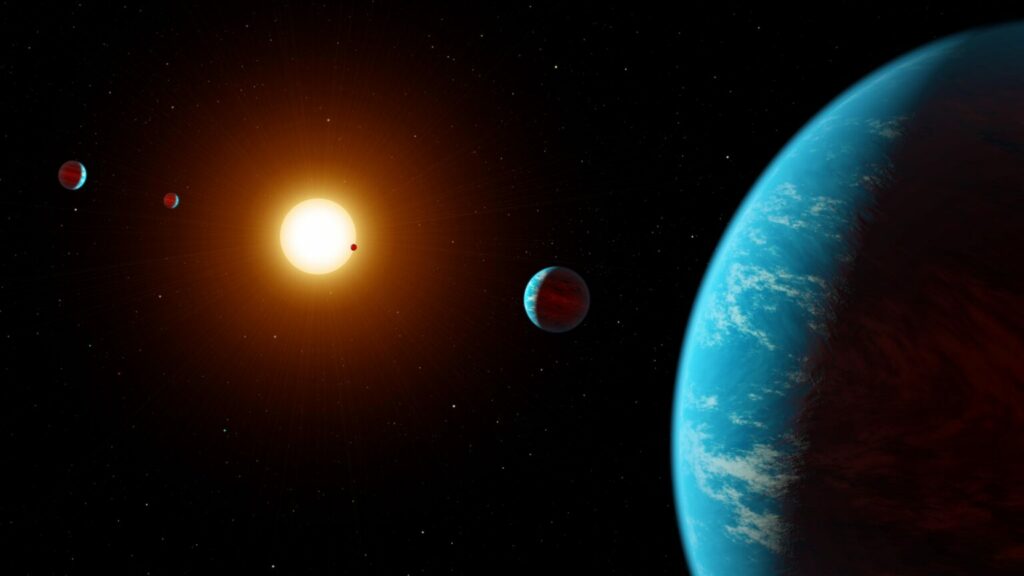
Five planets, including two super-Mercuries and three super-Earths, orbit a small star 127 light-years from us, called HD 23472. This is the finding of a recent study led by the University of Porto and published in the journal Astronomy & Astrophysics. The study also involved researchers at the Italian National Institute for Astrophysics (INAF).
The existence of the five exoplanets has been known since 2019 and now researchers have characterized these worlds – estimating their masses, densities and composition – using data provided by the third-generation ESPRESSO spectrograph installed on the VLT (Very Large Telescope) telescope of the ESO (the European Southern Observatory in northern Chile) designed specifically to draw an identikit of rocky exoplanets. The measurements were obtained using the radial velocity method that allows the mass of one or more planets to be determined from the displacements of the star caused by the planets that orbit around it.
Similar to our Mercury but larger and denser, the extrasolar planets that can be identified as super-Mercuries are very rare. Before this study, only six were known: now their number rises to eight.
To date, HD 23472 appears to be the only known planetary system with two super-Mercuries. “This allows us to obtain clues about how these planets were formed, which could help us exclude some possibilities,” said Susana Barros, lead author of the paper, who added: “For example, if an impact large enough to create a super-Mercury is already very unlikely, two giant impacts in the same system are even more unlikely. We still don’t know how these planets formed, but there seems to be a connection with the composition of the parent star. This new system can help us find out.”

